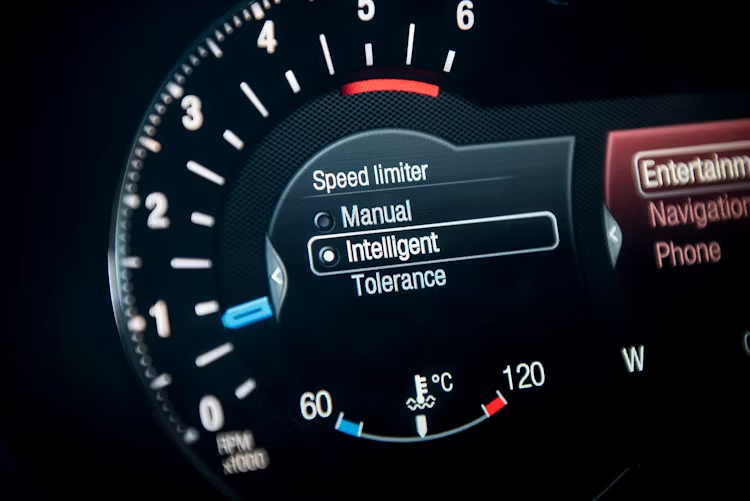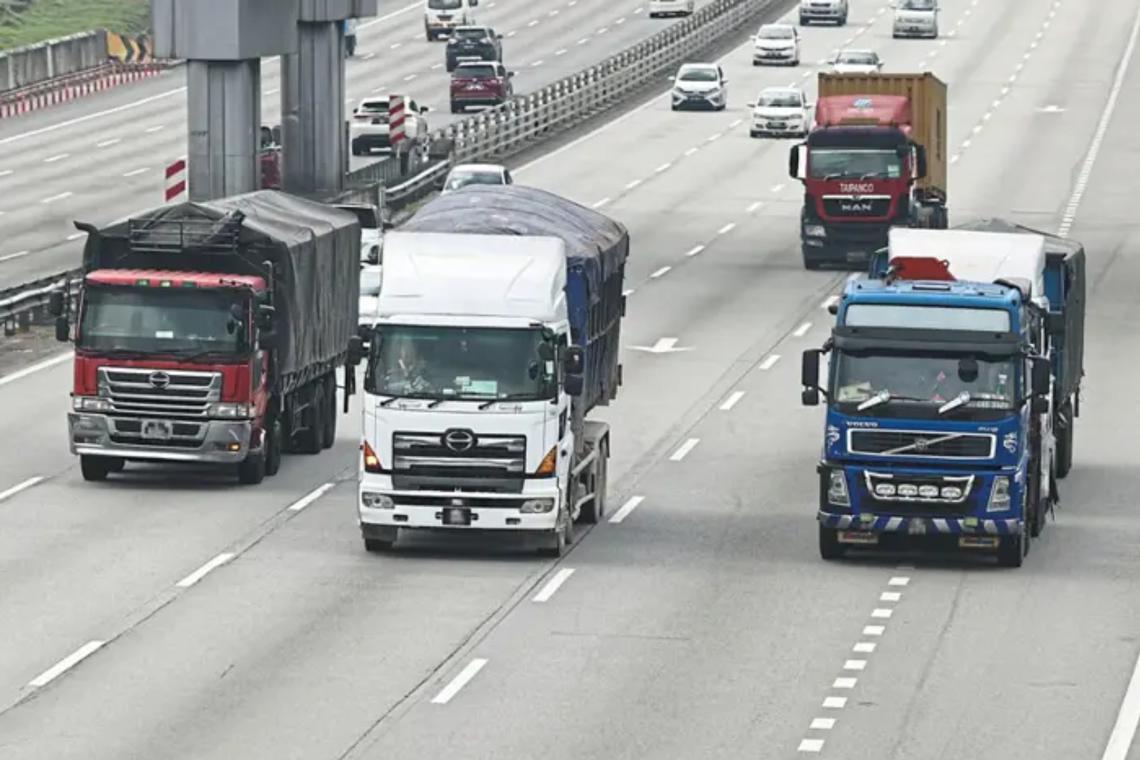The JPJ Speed Limiter Mandate 2025 requires all Malaysian commercial vehicles—especially buses, lorries, and fleet-based transport—to install certified speed limiters by a set deadline in 2025.
Failure to comply may lead to fines, impoundments, or license suspensions. This guide explains what the mandate involves, who must comply, the legal deadlines, and how to stay compliant using certified solutions like Resolute Dynamics’ speed limiters.
What is the JPJ Speed Limiter Mandate?
The JPJ Speed Limiter Mandate 2025 is a government-enforced regulation introduced by Jabatan Pengangkutan Jalan Malaysia (JPJ) under the Ministry of Transport, designed to reduce road accidents caused by speeding among commercial vehicles. As part of Malaysia’s broader national road safety strategy, the mandate requires specific classes of vehicles to be fitted with certified electronic speed limiting devices before the enforcement deadline in 2025.
This law doesn’t just introduce a new gadget—it enforces structural behavior change in how commercial fleets operate on roads. Once fully in effect, it will be illegal to operate selected commercial vehicles without an approved speed limiter installed and properly certified.
This initiative aligns with international road safety standards, such as those by the United Nations Economic Commission for Europe (UNECE R89) and recommendations from MIROS (Malaysian Institute of Road Safety Research). The intent is to prevent high-speed driving, particularly in urban areas, school zones, highways, and hilly terrains where braking distances increase and accident severity escalates.
What is a Speed Limiter?

A speed limiter, sometimes referred to as a speed governor, is a microcontroller-based or ECU-integrated device that caps the maximum speed a vehicle can reach, regardless of throttle input from the driver.
These systems are either:
-
Mechanically linked to the engine’s throttle body (older systems), or
-
Electronically controlled via the vehicle’s Engine Control Unit (ECU), using inputs from GPS, speed sensors, and sometimes terrain mapping algorithms (newer models).
Types of speed limiters:
-
Fixed Speed Limiters: Set to a single top speed (e.g., 90 km/h).
-
Dual or Terrain-Based Limiters: Automatically adjust top speed based on road conditions (e.g., 60 km/h in urban zones, 80 km/h on highways).
-
Adaptive Limiters: Integrated with GPS and real-time data to dynamically enforce speed limits per location.
Modern devices are designed to be tamper-proof, with event logging, system alerts, and certification markers that prove compliance during vehicle inspections.
Who Must Comply with the JPJ Speed Limiter Law?
The mandate is expected to apply broadly across commercial transport sectors that pose the highest risk in road safety statistics. JPJ’s focus is on vehicle classes that often exceed speed thresholds due to size, weight, or route types.
Here’s a breakdown of the vehicle types impacted:
Heavy-Duty Lorries (Class C and D)
These include container trucks, cargo hauliers, cement mixers, and petroleum tankers. Due to their weight and momentum, any high-speed maneuver becomes extremely dangerous, especially on highways and curved roads.
School Buses
Given the vulnerability of child passengers, school buses will be among the first categories enforced. Speed limiters here help prevent reckless driving and improve parental trust in school transportation.
Public Transport Buses
Intercity express buses, rapid transit vehicles, and tourism coaches often travel long distances at high speed. Limiting their top speed will significantly reduce fatal highway collisions.
Commercial Fleets in Logistics & Construction
Companies operating fleets of vans, pickups, and light trucks used for parcel delivery, construction support, or material transport will need to comply. These vehicles often operate under time pressure, increasing the risk of over-speeding.
Long-Haul & Cross-Border Transporters
Vehicles transporting goods across Malaysia-Thailand and Malaysia-Singapore routes are also under the scope. These trucks face strict international transit laws, and having a speed limiter can streamline border inspections.
Why Is This Law Being Enforced Now?
According to recent data from MIROS and JPJ:
-
Speeding is among the top three causes of fatal accidents in Malaysia.
-
Commercial vehicles, especially buses and lorries, are over-represented in fatality statistics, despite being a small percentage of vehicles on the road.
-
Past road tragedies (e.g., Genting Highlands bus crash) prompted public demand for better commercial vehicle regulation.
By controlling speed at the hardware level, JPJ aims to eliminate driver discretion when it comes to breaking speed limits.
This isn’t just a policy shift—it’s part of Malaysia’s commitment to Vision Zero and ASEAN Road Safety Strategy, aiming for fewer deaths per 100,000 vehicles.
Key Deadlines & Compliance Timeline
The JPJ Speed Limiter Mandate 2025 is on track to become a major shift in how Malaysia enforces road safety for commercial vehicles. While the official gazetted enforcement date has yet to be formally announced by Jabatan Pengangkutan Jalan (JPJ), all current indications point to full implementation between Q3 and Q4 of 2025.
This means that fleet owners, logistics managers, and transport operators should not wait for the last-minute enforcement notice. Preparation must begin now to avoid last-minute bottlenecks, installation delays, or non-compliance penalties.
Projected Timeline for Compliance
Below is a projected roadmap based on how similar JPJ regulations have been enforced in the past (e.g., tachograph rules, school bus color schemes, PUSPAKOM inspection rollouts):
| Timeline | Activity |
|---|---|
| Q1 2025 | Voluntary compliance begins — early adopters install speed limiters. |
| Q2 2025 | Certification process opens; PUSPAKOM may begin test inspections. |
| Q3 2025 | Mass enforcement likely begins. Vehicles may be pulled over for on-road compliance checks. |
| Q4 2025 | Full-scale legal enforcement; non-compliant vehicles face fines, seizure, or suspension of license. |
What Fleet Operators Need to Know Now

1. Vehicle Inspections May Start Months in Advance
Expect JPJ or PUSPAKOM to conduct random spot checks or targeted inspections in preparation for the official rollout. This means:
-
You’ll need to have a compliance certificate on hand
-
Your speed limiter device must be tamper-proof
-
All installation records must be verifiable by JPJ officers
Failure to show proof of installation during this pre-enforcement phase could result in warning letters or an official notice to comply within a grace period.
2. Installer Appointments Will Fill Up Quickly
Only JPJ-registered and certified installers can legally fit a compliant speed limiter system. Once the law enters its final phase, these technicians will be in extremely high demand.
This is what happened with:
-
Digital tachograph installations in 2019
-
School bus color conversion rules in 2017
Don’t wait. Book your installations early—especially if you operate a large fleet, or vehicles across multiple depots or states.
3. Documentation & System Testing Are Mandatory
After installation, your vehicle must:
-
Undergo system calibration
-
Pass a speed limiter functionality test
-
Be issued a compliance certificate (potentially under SIRIM, JPJ, or MOT Malaysia authority)
Your documents must clearly show:
-
Installer identity
-
Device serial number
-
Limiter settings
-
Installation date and location
These records should be stored in both physical and digital formats, ready for audit or on-road enforcement.
4. Early Compliance May Offer Strategic Benefits
There’s often a soft enforcement window during new regulatory rollouts, where early adopters:
-
Face fewer audits
-
Are prioritized for government or public contracts
-
May be eligible for insurance discounts or policy adjustments
If your business depends on JPJ compliance to maintain fleet licensing, SPAD permits, or school contracts, getting ahead of the deadline strengthens your reputation with both regulators and customers.
What Happens If You Miss the Compliance Window?
If you’re not compliant by Q4 2025:
-
Your vehicle could be barred from road use
-
You may receive a compound fine (estimated RM3,000–10,000)
-
Your fleet operating license could be suspended
-
Insurance claims may be denied in the event of an accident
JPJ may also blacklist repeat offenders, especially those operating in high-risk categories like express buses or chemical hauliers.
Pro Tip: Schedule in Phases
If you run a large fleet (e.g., 50+ vehicles), consider rolling out installations in stages, based on priority routes or risk levels:
-
Phase 1: Long-distance highway trucks and buses
-
Phase 2: Intercity vans and logistics vehicles
-
Phase 3: Urban delivery fleets and support vehicles
This approach spreads out costs and helps avoid last-minute bottlenecks in installation and testing.
Legal Requirements for Fleet Operators
Installing a speed limiter isn’t just a box to tick. For a fleet to meet JPJ’s 2025 compliance mandate, the process must follow strict legal, technical, and procedural standards—and those standards go beyond basic installation.
The Road Transport Department of Malaysia (JPJ), in collaboration with SIRIM, MIROS, and other regulatory agencies, has outlined clear compliance expectations. These aren’t optional — any deviation or shortcut may lead to penalties, failed inspections, or fleet disqualification from public contracts.
Below is a breakdown of the four core legal requirements every fleet operator must follow.
1. Certified Speed Limiter Devices Only
You can’t use just any limiter off the shelf. The speed limiter must be certified by SIRIM (Standard and Industrial Research Institute of Malaysia) or another JPJ-recognized certification body. Certification ensures that the hardware:
-
Meets technical specifications for accuracy and reliability
-
Is tamper-resistant
-
Includes data logging capabilities
-
Fulfills regulatory safety standards
Non-Compliant Devices Include:
-
Import-only units without SIRIM testing
-
DIY kits or uncertified retrofits
-
Speed limiters without logging or verification tools
Buying cheaper, uncertified devices may save costs upfront but exposes your fleet to legal consequences during enforcement inspections.
Certification Includes:
-
Unique device serial number
-
Manufacturer ID and installation record
-
Speed limit calibration data
-
Compliance tag or QR code for inspection
2. Engine & Terrain Compatibility (Device Type Matters)
Not every vehicle operates in the same environment, and not every limiter works the same way. JPJ recognizes this — which is why device compatibility with both engine type and terrain conditions is required.
For Flatland or Urban Vehicles:
-
A Fixed Speed Limiter that caps speed at a constant threshold (e.g., 80 km/h) is acceptable.
For Vehicles in Hilly or Mixed Terrain:

-
A Dual Speed Limiter is strongly recommended — and may become legally required for high-risk categories like school buses, long-haul trucks, and tourist coaches.
-
These advanced systems automatically adjust the speed cap based on:
-
GPS location
-
Gradient data
-
Pre-defined geo-fences or zones
-
This ensures that the limiter adapts to uphill acceleration, downhill braking zones, and urban slow-speed areas, improving both safety and drivability.
Common Use Cases:
| Vehicle Type | Recommended Limiter Type | Reason |
|---|---|---|
| Intercity Express Bus | Dual Speed Limiter | Hilly routes, variable terrain |
| School Bus | Fixed or Dual (by region) | Safety in school zones |
| Cargo Truck (Highway) | Fixed Speed Limiter | Constant high-speed environment |
| Logging Truck (Rural) | Dual Speed Limiter | Off-road and urban mixed zones |
3. Integration with GPS & Telematics
Modern compliance is digital. Speed limiters must be integrated with GPS tracking systems or telematics platforms that provide:
-
Real-time speed data
-
Location-based enforcement
-
Audit trails for enforcement officers
-
Alerts when vehicles exceed pre-set parameters
JPJ has signaled strong intent to connect future compliance enforcement with fleet telematics data. This could mean:
-
Cloud-based validation of limiter settings
-
Automatic notifications when devices are disconnected or tampered with
-
Live route-based speed reports
If your fleet already uses GPS tracking (e.g., Resolute Dynamics’ system), your limiter device must be compatible with your current setup—or you risk needing a costly hardware upgrade.
4. Installation by Licensed Technicians Only
Just buying the right hardware is not enough. It must be installed by JPJ-licensed technicians or authorized fleet solution providers—like Resolute Dynamics Malaysia, who specialize in compliance-ready installations.
Why Certification of Installation Matters:
-
Only licensed technicians can calibrate speed limits correctly based on engine specs
-
They issue a Compliance Certificate that is recognized during JPJ or PUSPAKOM audits
-
Unauthorized installations are not recognized by JPJ, regardless of the device’s quality
Required Installation Records:
-
Installer’s certification ID
-
Vehicle plate number and chassis number
-
GPS coordinates of installation
-
Photographic evidence (before & after)
-
Device serial number and settings snapshot
Keep these documents safe. During on-road inspections or license renewals, JPJ officers may request immediate proof of compliant installation.
Penalties for Non-Compliance
Failure to install a certified speed limiter by the deadline could lead to:
-
Fines up to RM10,000 per vehicle
-
License suspension or revocation
-
Vehicle impoundment
-
Loss of public contracts or insurance coverage
In short, non-compliance can shut down operations or severely damage your business’s reputation.
How Resolute Dynamics Helps You Stay Compliant
Resolute Dynamics offers JPJ-compliant speed limiter systems, tailored for Malaysia’s commercial vehicle regulations.
Fleet-Focused Product Line:
-
Vehicle Speed Limiter / Governor – restricts top speed using engine-based control.
-
Dual Speed Limiter – terrain-aware system for hill routes or long-haul fleets.
-
School Bus Safety Limiter – designed specifically for passenger safety in school transport.
-
GPS Tracking Systems – ensures centralized control, route visibility, and compliance logs.
All devices come with installation, certification support, and integration with existing telematics systems.
Why Choose Resolute?
-
SIRIM-compliant solutions
-
Pre-sales consultation
-
Fleet-wide rollout support
-
Post-installation compliance audits
Recommended Compliance Checklist for Fleet Owners
Step 1: Audit all commercial vehicles
Step 2: Identify which models require speed limiters
Step 3: Choose certified hardware (Resolute Dynamics recommended)
Step 4: Book installation with licensed technician
Step 5: Complete system testing and obtain certification
Step 6: Store compliance documents in your fleet records
Step 7: Train drivers on operational changes and monitoring systems
Frequently Asked Questions
Can I retrofit my older vehicles?
Yes, most older diesel or petrol commercial vehicles can be fitted with aftermarket speed limiters.
What if I already use a telematics system?
Speed limiters can often integrate with existing systems. Make sure your hardware supports that.
Is the rule different for inter-state transport?
No, the rule applies nationwide. However, additional enforcement may apply in urban or school zones.
Final Steps Before the Deadline
Don’t wait until mid-2025. The earlier you act, the smoother your compliance process will be. Fleet-wide rollout takes time—especially if you operate 20+ vehicles.
Resolve the issue now with a certified provider like Resolute Dynamics. They’ll help with everything from product selection to JPJ approval.
Conclusion
The JPJ Speed Limiter Mandate 2025 isn’t just a regulation—it’s a shift in how road safety is enforced in Malaysia. If you’re in logistics, transport, or fleet operations, this law will impact your business.
Start now. Audit your fleet. Get a certified speed limiter installed. And stay one step ahead of enforcement.
Need help staying compliant?
Visit Resolute Dynamics to explore speed limiter options designed for JPJ’s legal standards.
